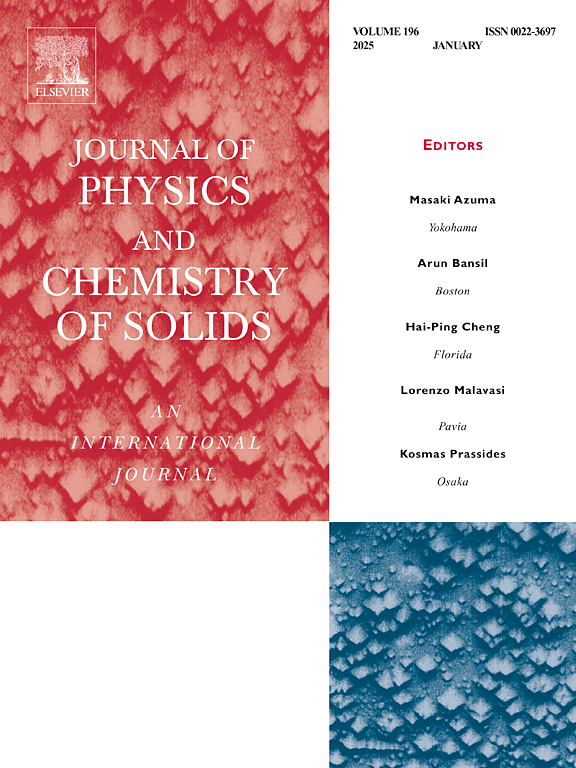Investigation of dual absorbers with novel MXene doped perovskite for Extraordinary performance of perovskite solar cells
IF 4.3
3区 材料科学
Q2 CHEMISTRY, MULTIDISCIPLINARY
引用次数: 0
Abstract
This study focuses on the numerical modeling of methylammonium lead halide (MAPbl3-XClX) based perovskite solar cells (PSCs) under optimal conditions. The selection of two perovskite materials, MAPbl3-XClX and MAPbI3+Ti3C2, as the light absorber is advantageous due to their ability to achieve a broader absorption spectrum, with both materials having a bandgap in the range of 1.55 eV–1.6 eV, which is comparable to that of methylammonium lead iodide (MAPbI3). While these materials still contain lead and thus share the same toxicity concerns, the introduction of MXenes like Ti3C2 enhances stability, improves charge transport, and increases overall efficiency, making them more viable for long-term applications. To further enhance device efficiency, selecting stable and high-performing carrier transport materials (CTMs) is a key strategy. Among the proposed options, the combination of Spiro-OMeTAD and ZnO as CTMs, along with an optimized thickness of the MAPbl3-XClX and MAPbI3+Ti3C2 layers, resulted in a higher power conversion efficiency (PCE) of 27.12 % under AM1.5 photo illumination. Moreover, minimizing defects in PSC devices is crucial for further optimization and future advancements.
求助全文
约1分钟内获得全文
求助全文
来源期刊
CiteScore
7.80
自引率
2.50%
发文量
605
审稿时长
40 days
期刊介绍:
The Journal of Physics and Chemistry of Solids is a well-established international medium for publication of archival research in condensed matter and materials sciences. Areas of interest broadly include experimental and theoretical research on electronic, magnetic, spectroscopic and structural properties as well as the statistical mechanics and thermodynamics of materials. The focus is on gaining physical and chemical insight into the properties and potential applications of condensed matter systems.
Within the broad scope of the journal, beyond regular contributions, the editors have identified submissions in the following areas of physics and chemistry of solids to be of special current interest to the journal:
Low-dimensional systems
Exotic states of quantum electron matter including topological phases
Energy conversion and storage
Interfaces, nanoparticles and catalysts.

 求助内容:
求助内容: 应助结果提醒方式:
应助结果提醒方式:


